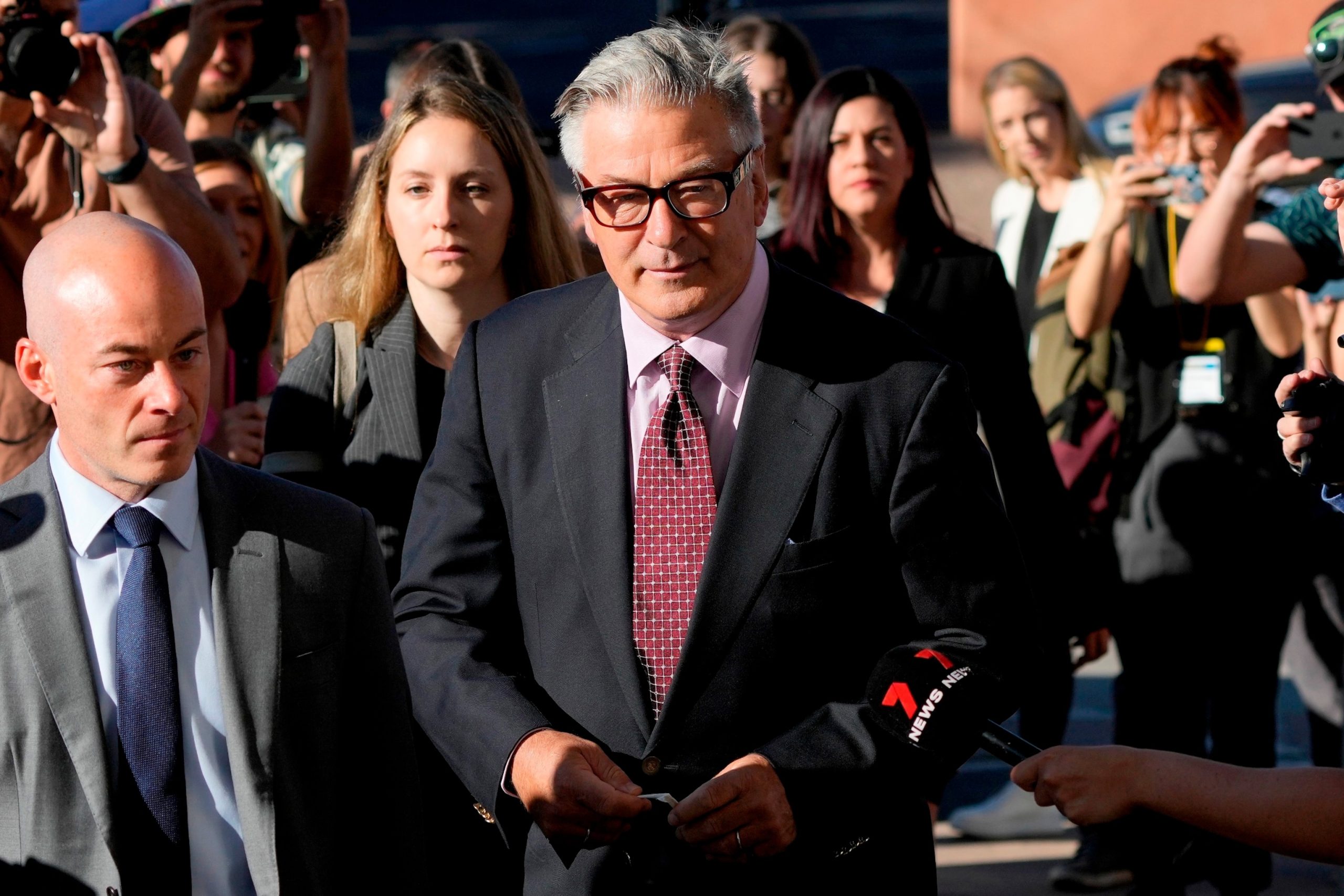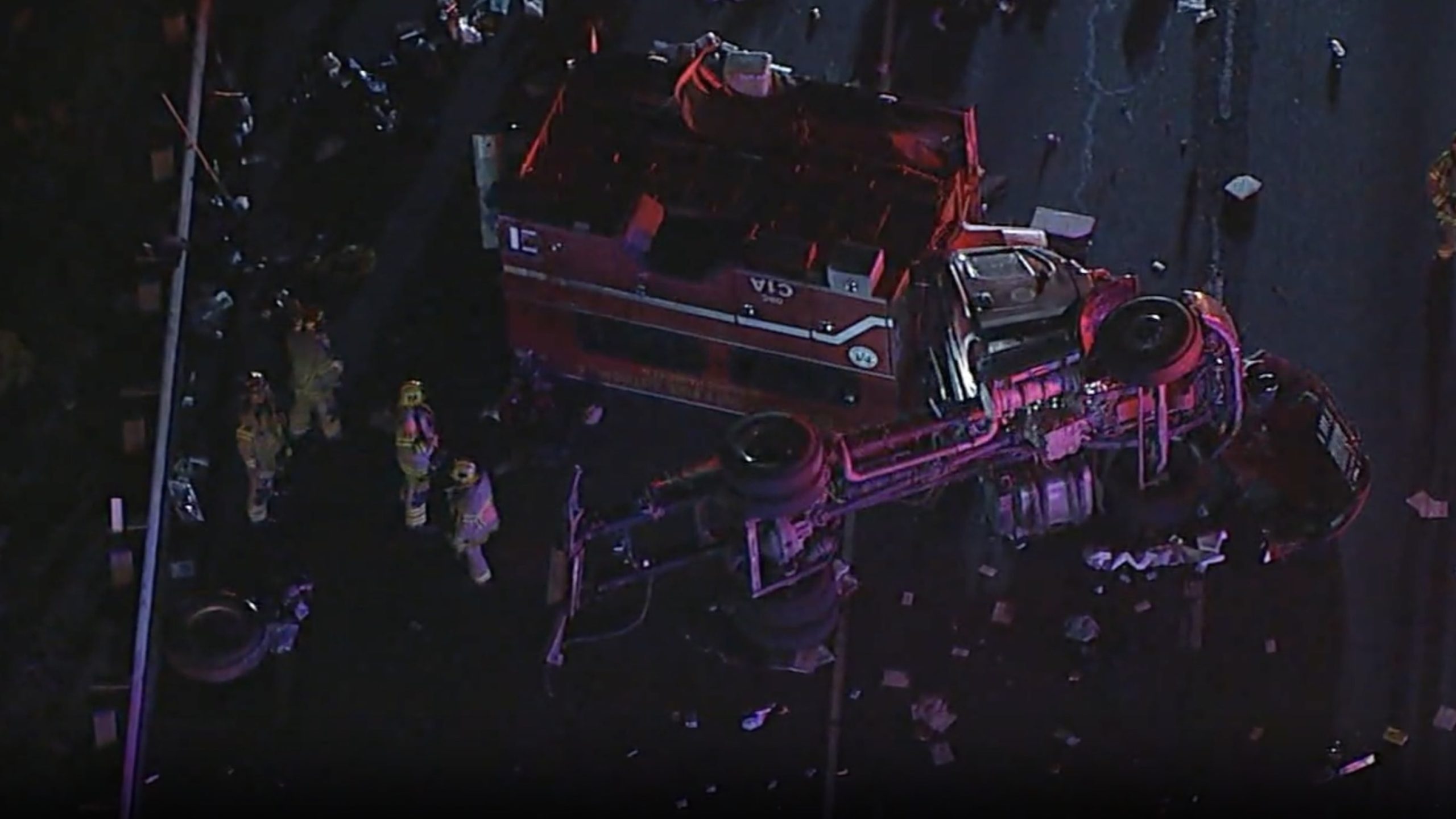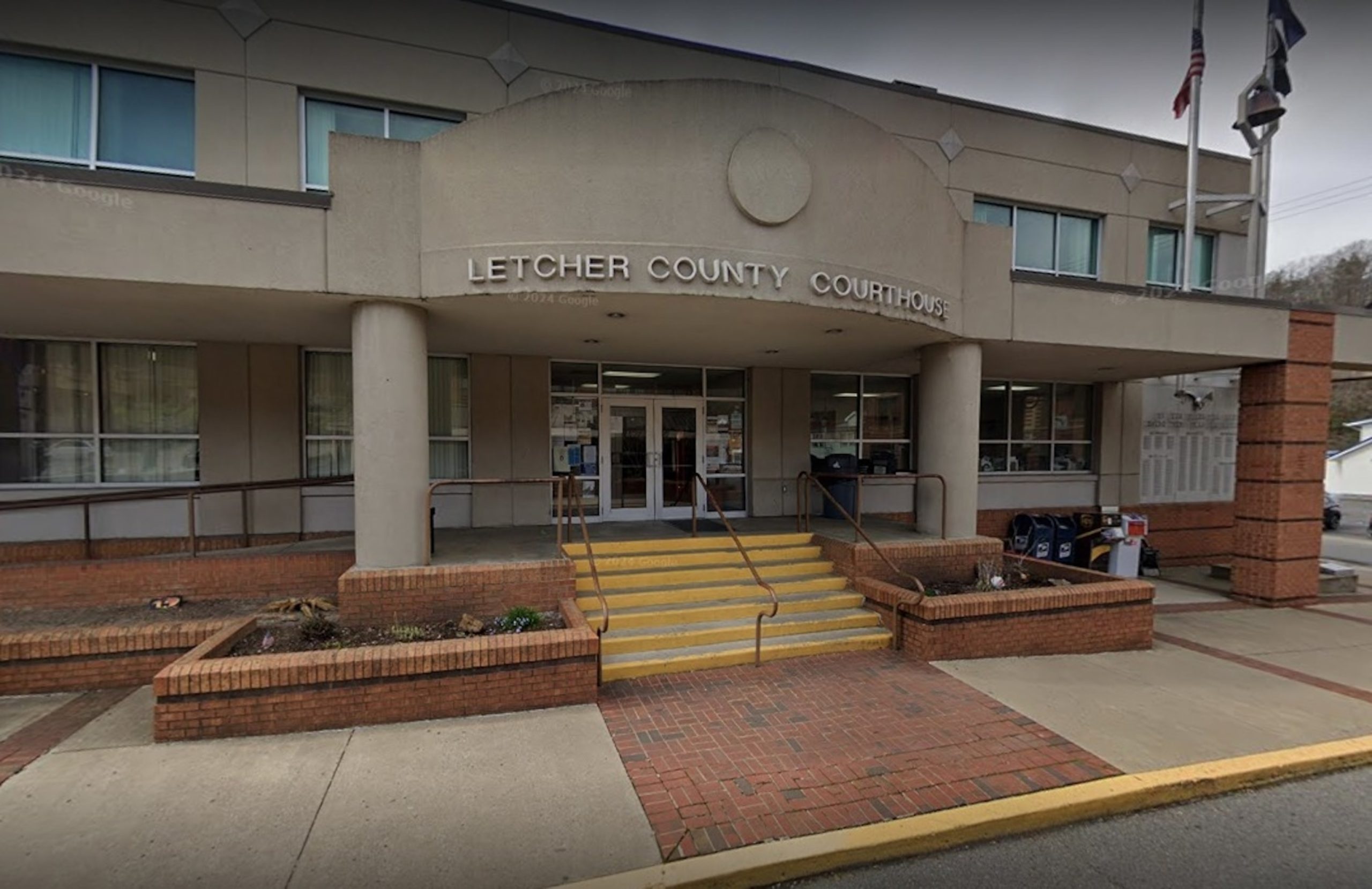Prosecutors argued Alec Baldwin behaved recklessly and “violated the cardinal rules of firearm safety” during the filming of “Rust,” while the defense said the actor “committed no crime” in the “unspeakable tragedy,” during opening statements Wednesday in the manslaughter trial over the 2021 fatal on-set shooting.
Baldwin was practicing a cross-draw in a church on the Santa Fe set of the Western when the Colt .45 revolver fired a live round, fatally striking 42-year-old cinematographer Halyna Hutchins and wounding director Joel Souza.
Baldwin was indicted by a grand jury on involuntary manslaughter in connection with Hutchins’ death earlier this year after prosecutors previously dropped the charge. He pleaded not guilty.

Actor Alec Baldwin arrives for his hearing in Santa Fe County District Court with attorney Luke Nikas, left, July 10, 2024, in Santa Fe, N.M. Baldwin is facing a single charge of involuntary manslaughter in the death of a cinematographer.
Ross D. Franklin/AP
Baldwin committed ‘numerous breaches’ of firearm safety, state says
“The evidence will show, ladies and gentlemen, that like in many workplaces, there are people who act in a reckless manner and place other individuals in danger, and act without due regard for the safety of others,” prosecutor Erlinda Ocampo Johnson told jurors during her opening statement. “That, you will hear, was the defendant — Alexander Baldwin, the lead actor on this film.”
Johnson told jurors that while they will hear the revolver referred to as a “prop gun,” it is a real gun that experts will testify was in proper working order.
She told jurors they will hear about “numerous breaches” of firearm safety regarding Baldwin, from him using it as a pointer to cocking the hammer and putting his finger on the trigger when he was not supposed to do either.
While handling the firearm prior to the shooting, Baldwin “would do his own thing,” including having his finger on or around the trigger during two draws, Johnson said.
“The evidence will show that that third and fatal time, he takes it out once again, fast,” Johnson said. “He cocks the hammer, points it straight at Miss Hutchins and fires that gun, sending that live bullet right into Miss Hutchins’ body.”
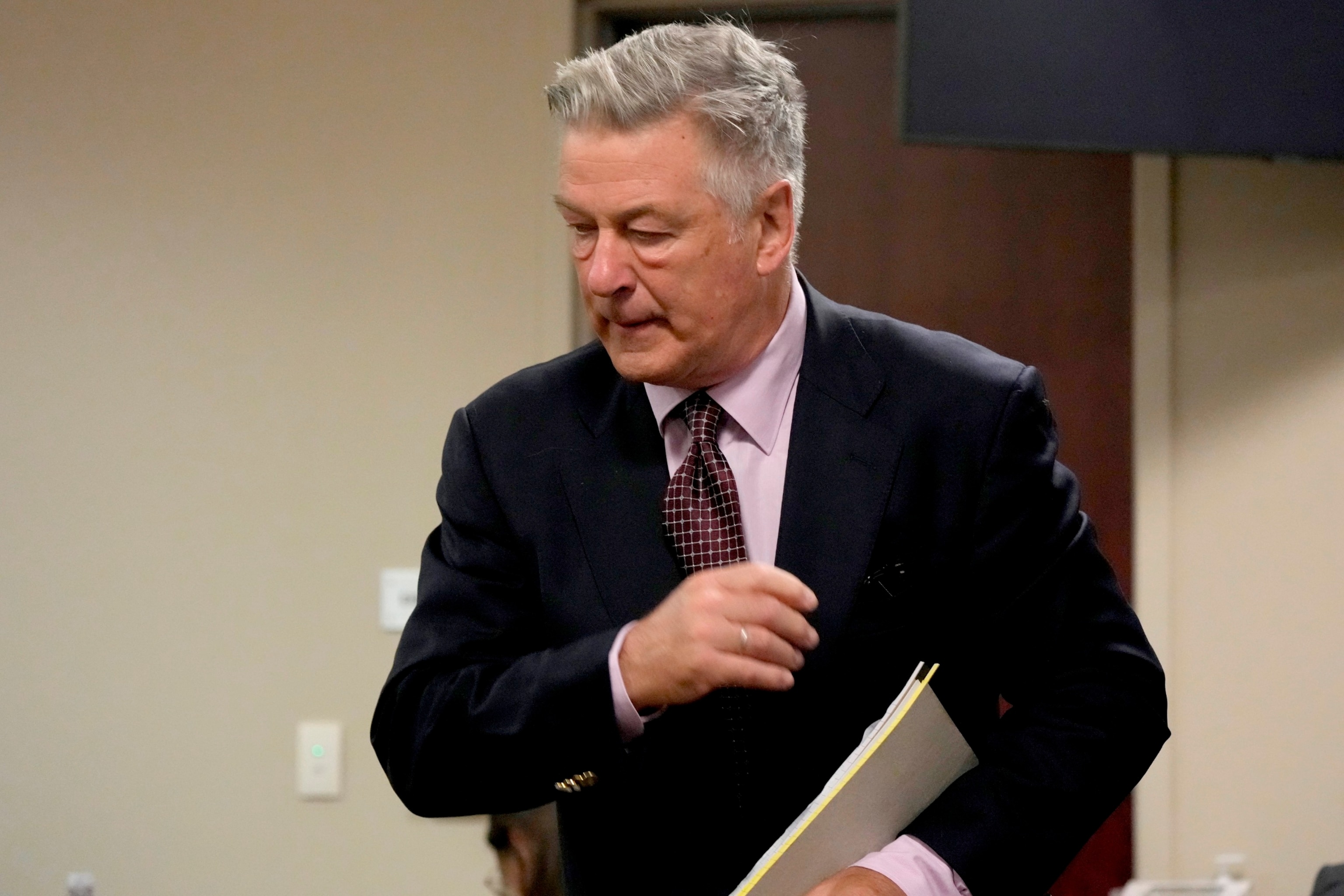
Actor Alec Baldwin arrives for his hearing in Santa Fe County District Court, July 10, 2024, in Santa Fe, N.M.
Ross D. Franklin/AP
Baldwin has maintained that he did not pull the trigger of the firearm, though the FBI’s forensic report determined the gun could not have been fired without pulling the trigger.
“After the shooting, the defendant began to claim he didn’t pull the trigger. The evidence will show, ladies and gentlemen, that’s not possible,” Johnson told jurors.
Live bullet on set ‘most critical issue,’ defense says
Defense attorney Alex Spiro told jurors the state will attempt to “tarnish” Baldwin but that the “most critical issue” in the case is how the live bullet got on set.
“On this set, there was a real bullet, something that should never be on a movie set, something which has nothing to do with making a movie,” Spiro told the jurors during his opening statement. “You will hear no evidence, not one word that Alec Baldwin had anything to do with that real bullet being brought onto that set.”
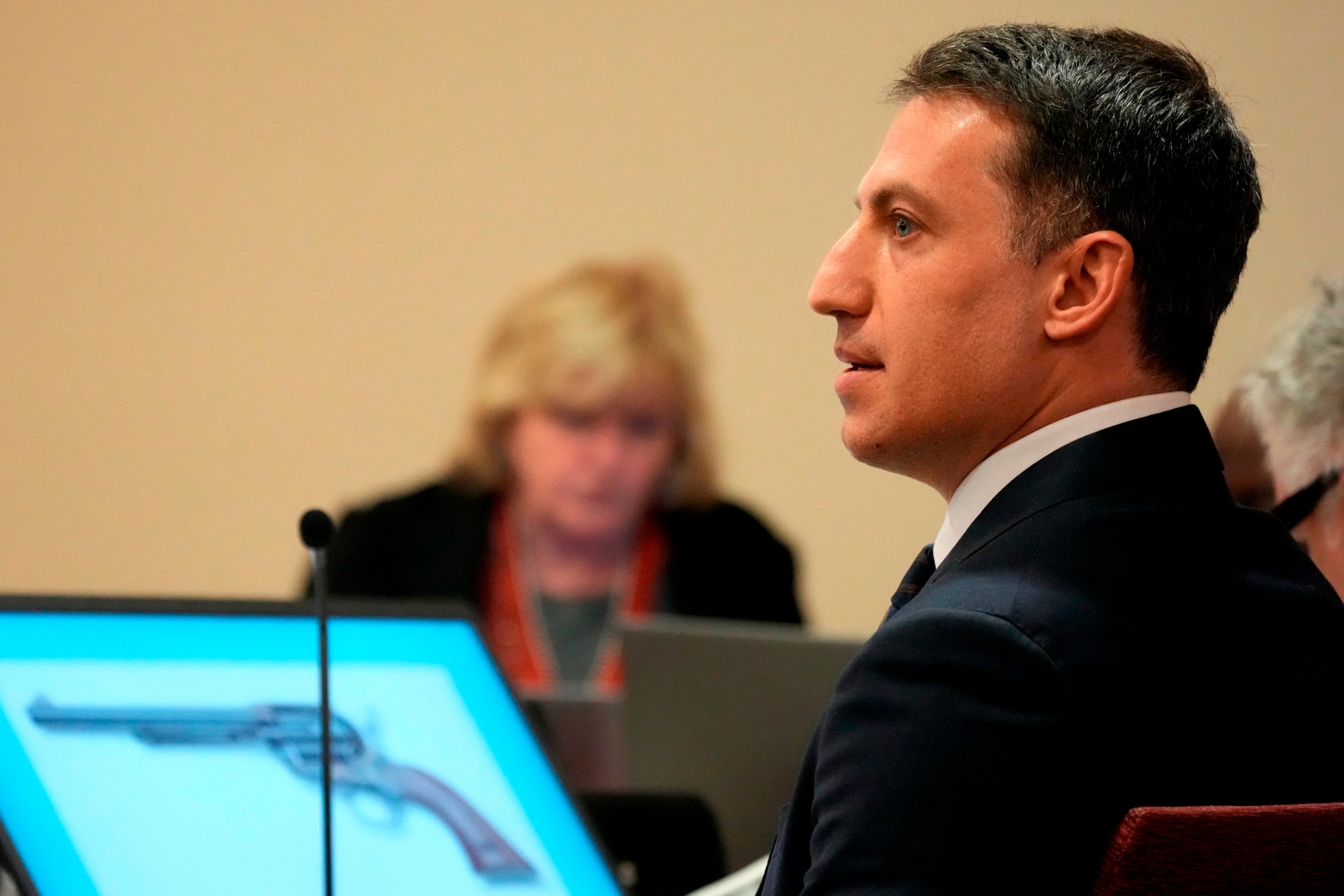
Attorney Alex Spiro listens during actor Alec Baldwin’s trial in Santa Fe County District Court, July 10, 2024, in Santa Fe, N.M.
Ross D. Franklin/AP
He said it was the armorer’s responsibility to ensure the firearm was safe, and that the loading of the live bullet had nothing to do with Baldwin.
“No one had any idea that this venomous, toxic element had been inserted into this magic they were creating,” Spiro said. “But it did. It entered that place. It killed an amazing person, it wounded another, and it changed lives forever.”
Spiro said when the gun was handed to Baldwin, “cold gun” was announced, indicating it was safe. When it fired, everyone on set was “shocked,” he said.
“Alec is startled. He immediately says, ‘I didn’t mean to shoot. I didn’t pull the trigger,'” Spiro said.
Spiro said that Baldwin didn’t pull the trigger but that on a movie set “you’re allowed to pull the trigger.” Even if the state could prove that Baldwin did intentionally pull the trigger, “that doesn’t make him guilty of homicide,” Spiro said.
“He did not know, or have any reason to know, that gun was loaded with a live bullet,” Spiro said. “That’s the key. That live bullet is the key. That is the lethal element.”
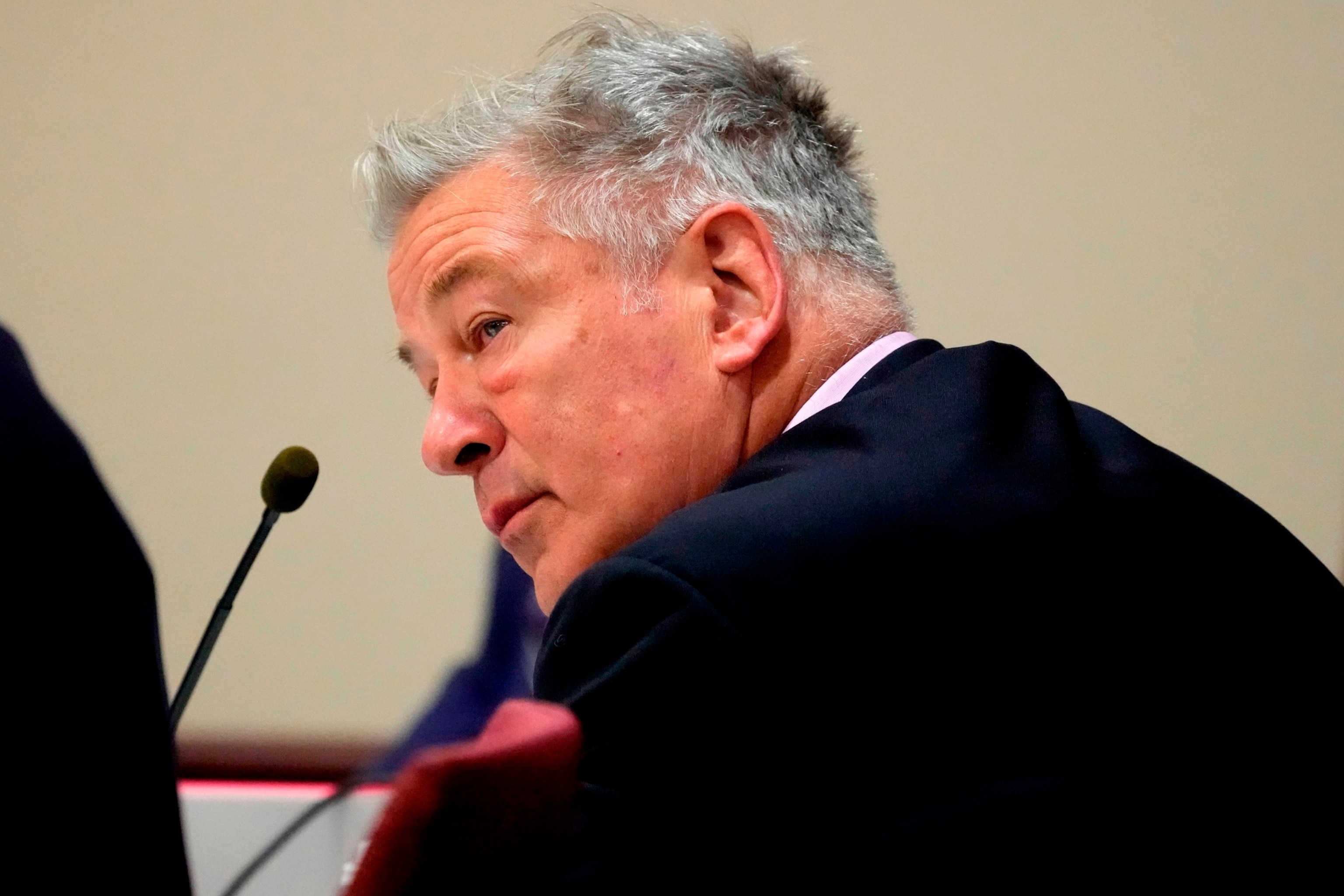
Actor Alec Baldwin listens during his hearing in Santa Fe County District Court, July 10, 2024, in Santa Fe, N.M.
Ross D. Franklin/AP
1st witness recounts response to shooting
Following opening arguments, the state called its first witness, officer Nicholas Lefleur, who was the first law enforcement officer to arrive in response to a 911 call reporting the on-set shooting.
Lefleur discussed his efforts to secure the scene at the Bonanza Creek Ranch and separate witnesses.
During footage from his lapel camera shown to the jury, Lefleur seeks out Baldwin — who is seen talking on his cellphone while still in costume — and says he understands the actor was in the room during the shooting.
“I was the one holding the gun, yeah,” Baldwin responds.
Prosecutor Kari Morrissey questioned Lefleur about several instances in which Baldwin was seen talking to other witnesses even though the officer asked him not to.
In his cross-examination, Spiro addressed that at no point during those instances did Lefleur tell the witnesses to separate.
Baldwin 2nd person to go on trial in shooting
The jury was selected on Tuesday. The trial is currently scheduled to go through July 19. That does not include deliberations.
Prosecutors were seeking to argue during the trial that, as a producer of the film, Baldwin bore responsibility for unsafe conditions on the set. However, during a pretrial hearing on Monday, Judge Mary Marlowe Sommer denied using evidence of his role as a producer during the trial.
The judge also ruled that footage from the “Rust” set showing Baldwin’s handling of the firearm can be admitted into evidence in the trial, but that videos of him yelling or cussing at the crew to hurry up were not relevant in the case.
Baldwin, 66, is the second person to go on trial in connection with the fatal shooting.
The film’s armorer — 27-year-old Hannah Gutierrez — was found guilty of involuntary manslaughter in March. Prosecutors argued that she repeatedly failed to maintain proper firearm safety and brought several live rounds onto the set — including the one that killed Hutchins.
Her attorney told ABC News on Tuesday that they have been informed that she will be called to testify on Friday and plans to invoke the Fifth Amendment.
Marlowe Sommer denied last month the state’s request to use immunity to compel Gutierrez’s testimony during Baldwin’s trial. Prosecutors sought immunity so that Gutierrez’s testimony could not be used against her in her appeal. At a pretrial interview in May, Gutierrez asserted her Fifth Amendment privilege against self-incrimination, prosecutors said.
Last year, David Halls, the film’s first assistant director who had conducted the safety check on the Colt .45 revolver prior to the shooting, accepted a plea deal in the case after being charged with negligent use of a deadly weapon. He was sentenced to six months unsupervised probation.
He could also be called to testify during the trial, court records show.
The trial surrounding the tragic shooting on the set of Alec Baldwin’s film “Rust” has captured the attention of the public and media alike. As the proceedings get underway, one key aspect that will be closely scrutinized is the opening statements made by both the prosecution and defense.
In any trial, opening statements serve as a roadmap for the jury, outlining the key points that each side will argue throughout the case. In the case of Alec Baldwin, who was holding the prop gun that discharged and killed cinematographer Halyna Hutchins, the opening statements will likely focus on his level of culpability in the shooting.
The prosecution is expected to argue that Baldwin was negligent in handling the prop gun, leading to the tragic death of Hutchins. They may point to safety protocols that were allegedly not followed on set, as well as Baldwin’s own responsibility as a producer on the film to ensure a safe working environment. The prosecution may also highlight any previous incidents involving prop guns on set or any complaints about safety concerns raised by crew members.
On the other hand, the defense is likely to argue that Baldwin had no intent to harm anyone and that the shooting was a tragic accident. They may point to industry standards for handling prop guns and argue that Baldwin was following proper procedures at the time of the incident. The defense may also highlight Baldwin’s lack of experience with firearms and his reliance on the expertise of the film’s armorer.
Ultimately, the opening statements in the “Rust” trial will set the tone for the rest of the proceedings and provide a glimpse into how each side plans to argue their case. As the trial unfolds, it will be up to the jury to weigh the evidence presented and determine Baldwin’s level of culpability in the shooting.
In a case as high-profile as this one, with a beloved actor at the center of a tragic accident, emotions are sure to run high. It is important for both sides to present their arguments clearly and persuasively, while also respecting the gravity of the situation and the loss of life that occurred on that fateful day on the set of “Rust.” Only time will tell how the trial will unfold and what ultimately will be determined regarding Alec Baldwin’s culpability in the shooting.
